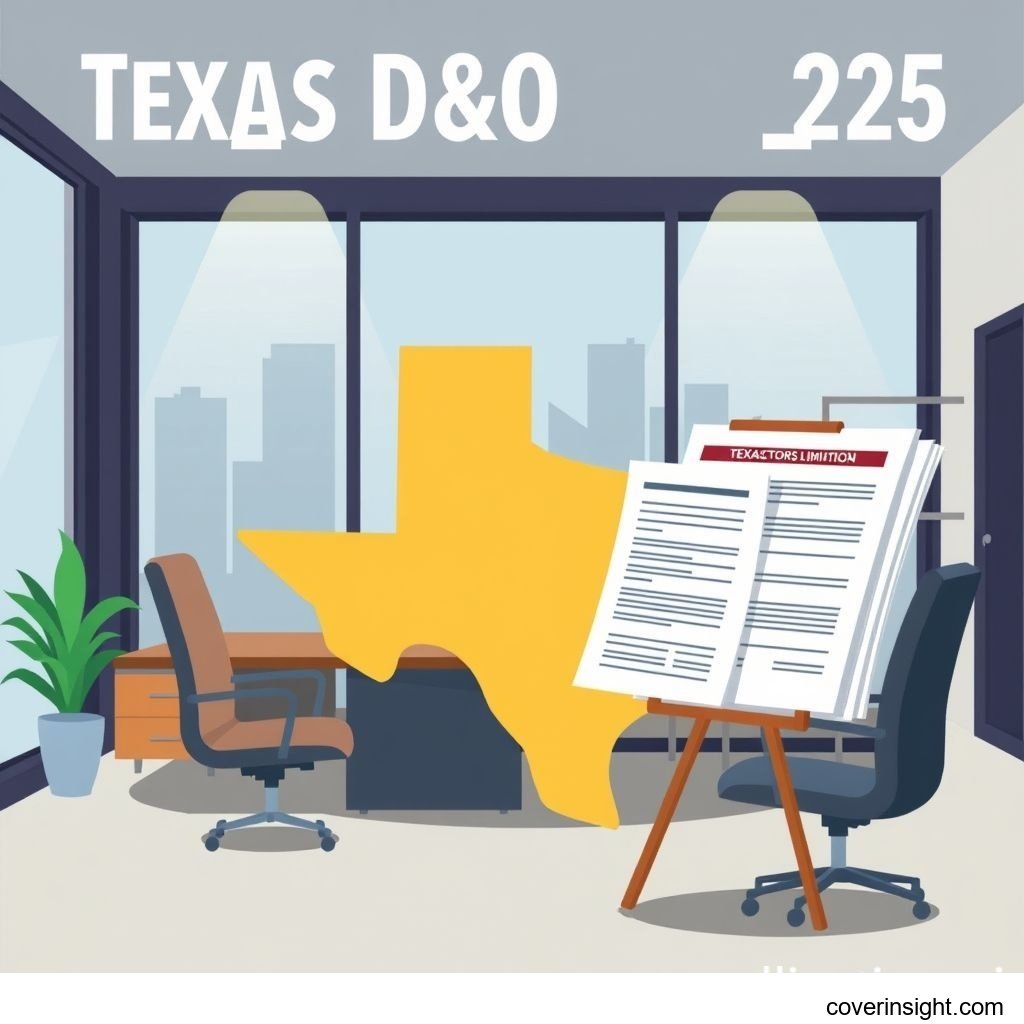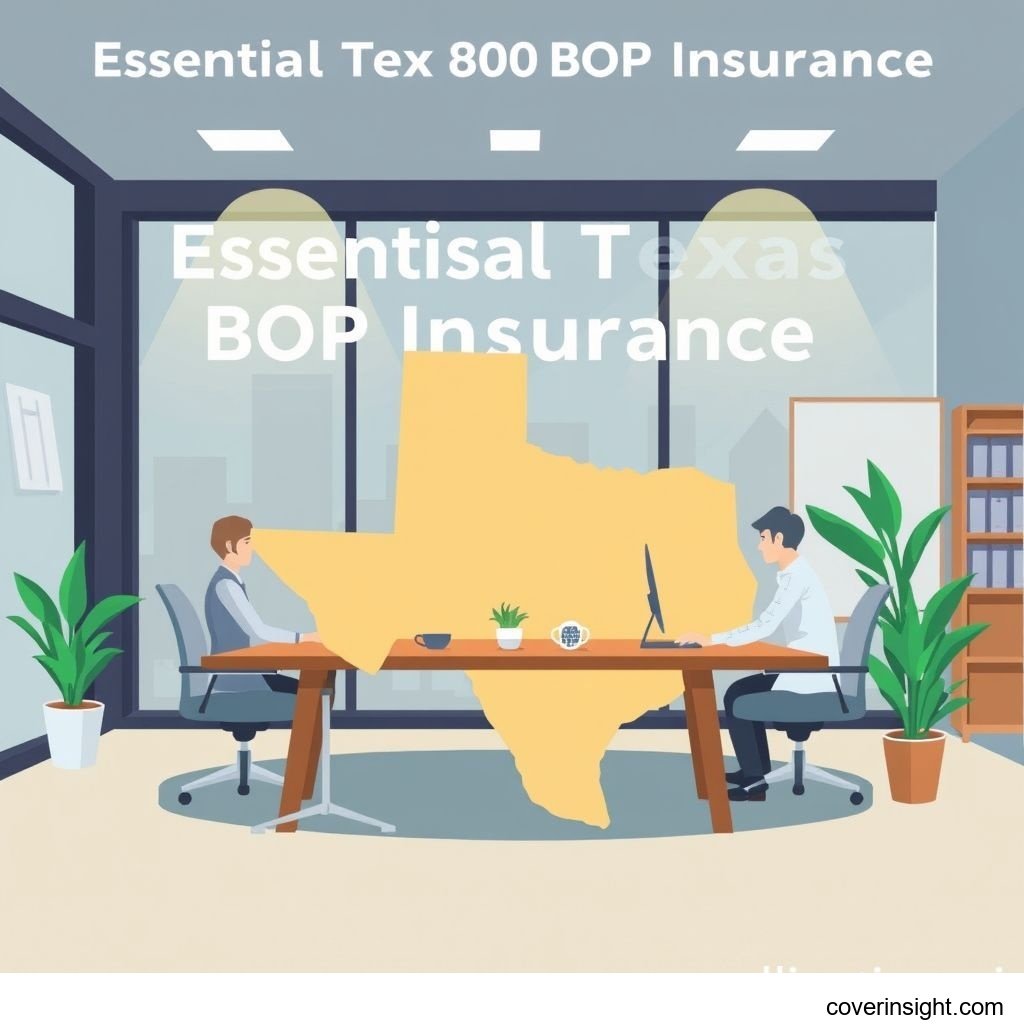Introduction
As 2025 approaches, the landscape for businesses in the US, particularly here in Texas, continues to evolve rapidly. Amidst this dynamic environment, directors and officers coverage has never been more crucial. Often referred to simply as D&O, this specialized insurance policy is designed to protect your business assets by shielding the personal assets of your company's leaders – its directors, officers, and sometimes even key employees – from potential lawsuits arising from their management decisions and actions. In a litigious society, understanding your exposure and securing robust Texas D&O coverage 2025 is not just good practice; it’s a non-negotiable safeguard. Failing to secure this vital protection could leave your executives vulnerable to significant personal financial ruin and cripple your business operations.
Coverage Details
Navigating the intricacies of D&O policies can feel like splitting hairs, but understanding what's included and what's typically excluded is key to ensuring you're not left out in the cold when a claim hits.
What’s Included
A comprehensive D&O policy generally provides coverage for a wide range of "wrongful acts" committed by directors and officers in their capacity as corporate leaders. This includes allegations of breach of fiduciary duty, misrepresentation, neglect, and errors in judgment. Crucially, it covers the legal defense costs, settlements, and judgments associated with these claims.
Common scenarios where D&O steps in include:
-
Shareholder lawsuits: Allegations of mismanagement, financial misstatements, or corporate governance failures.
-
Regulatory investigations: Defense costs when agencies like the SEC or state regulatory bodies investigate your company's practices.
-
Employment Practices Liability (EPL) elements: While often a separate policy, some D&O forms may include limited coverage for claims like wrongful termination or discrimination, especially if bundled.
-
Creditor or Competitor lawsuits: Claims alleging harm from business decisions.
It’s worth noting that D&O coverage often includes three primary insuring agreements: Side A (non-indemnifiable claims against individuals), Side B (reimbursement to the company for indemnifying its directors/officers), and Side C (entity coverage for the company itself in securities claims).
Common Exclusions
While D&O coverage is broad, it's not a silver bullet for every risk. Standard exclusions are designed to prevent overlap with other insurance types or to exclude uninsurable risks. These typically include:
-
Fraudulent or dishonest acts: Intentional criminal acts, illegal profits, or bodily injury and property damage are typically excluded, as they're often covered by general liability or other specialized policies.
-
Prior acts: Claims arising from incidents that occurred before the policy's retroactive date.
-
Insured vs. Insured: Claims brought by one insured party against another (e.g., a director suing another director), though there are often carve-outs for whistleblowers.
-
Pollution or environmental damage: These are usually handled by environmental liability policies.
-
Fines or penalties: While defense costs might be covered, the actual fines or penalties imposed by regulatory bodies are often excluded.
Cost Analysis
Understanding the factors that influence the price of D&O coverage can help you make informed decisions and potentially save a pretty penny. It’s not a one-size-fits-all product; premiums can vary wildly.
Price Factors
The cost of directors and officers coverage is influenced by several key variables:
-
Company Size and Industry: Larger companies with more complex operations or those in high-risk sectors (e.g., tech, healthcare, financial services) generally pay more. For instance, a tech startup in Silicon Hills might face higher premiums due to the prevalence of intellectual property disputes and rapid growth compared to a well-established manufacturing firm.
-
Financial Stability: Insurers will scrutinize your company's balance sheet, revenue, and profitability. A strong financial standing can signal lower risk.
-
Claims History: A company with a clean slate for past D&O claims will typically secure better rates.
-
Corporate Governance: Robust corporate governance practices, clearly defined roles, and transparent decision-making processes can indicate a lower risk profile.
-
Coverage Limits and Deductible: Higher coverage limits naturally lead to higher premiums, while choosing a higher deductible can reduce your upfront cost, albeit increasing your out-of-pocket exposure in the event of a claim.
-
Number of Directors and Officers: More individuals covered generally means more potential exposure.
Saving Tips
While you can't control every factor, there are proactive steps you can take to mitigate costs:
-
Implement Strong Governance: Regular board meetings, clear policies, and an independent board structure can demonstrate a commitment to good governance. According to the National Association of Insurance Commissioners (NAIC), strong internal controls are often cited as a key factor in reducing litigation risk. You can find more insights on regulatory compliance through the National Association of Insurance Commissioners.
-
Risk Management: Develop and adhere to robust risk management protocols. Proactive measures to mitigate potential liabilities can look favorable to insurers.
-
Increase Deductible: If your business has healthy reserves and a low-risk tolerance, opting for a higher deductible can significantly lower your premium.
-
Shop Around: Don't settle for the first quote. Work with an experienced insurance broker who specializes in D&O to compare policies and pricing from multiple carriers. Think of it as "getting your ducks in a row" before making a big decision.
-
Bundle Policies: Sometimes, insurers offer discounts if you purchase multiple policies (e.g., D&O, General Liability, EPLI) from them.
-
Review Coverage Annually: Business operations change, and so should your insurance. Regularly review your policy to ensure it still meets your needs without over-insuring. For general guidance, explore US Insurance Home.
FAQs
How much does directors and officers coverage cost?
The cost can vary wildly, ranging from a few thousand dollars annually for small private companies to millions for large, publicly traded corporations. For a typical small to medium-sized private company in Texas, you might expect to pay anywhere from $3,000 to $15,000 per year, but this is a broad estimate based on the factors mentioned above.
What affects premiums?
As discussed, key factors include company size, industry risk, financial health, claims history, the robustness of your corporate governance, the chosen coverage limits, and your deductible.
Is it mandatory?
No, directors and officers coverage is not legally mandatory for most private companies in the US. However, it is almost universally required by investors, especially venture capitalists and private equity firms, when they invest in your company. Publicly traded companies are virtually always expected to carry D&O insurance. Without it, attracting top-tier talent to your board or executive team can be next to impossible, as individuals will be reluctant to put their personal assets at risk.
How to choose?
Choosing the right policy involves assessing your company's specific risks, understanding your growth trajectory, and reviewing the financial strength of the insurer. Work closely with a knowledgeable insurance broker who specializes in management liability. They can help you compare policy language, exclusions, and endorsements from various carriers to find a tailored solution that fits your budget and risk profile. You can often find local resources through your State Insurance Departments.
Consequences of no coverage?
The consequences of operating without D&O coverage can be severe. Directors and officers could face personal liability, meaning their homes, savings, and other personal assets are at risk if they are sued. This can deter highly qualified individuals from joining your board or leadership team. For the company itself, the costs of defending a lawsuit, even if successful, can be astronomical, potentially leading to bankruptcy. In essence, it's about making sure your leadership isn't "left holding the bag" if things go south.
Author Insight & Experience:
Based on my experience, especially watching the entrepreneurial spirit thrive here in Texas, I've seen firsthand how quickly a promising venture can be derailed by an unforeseen lawsuit against its leadership. It’s not just about guarding against malfeasance; it's often about protecting against honest mistakes that can still lead to significant legal battles. Many small and medium-sized business owners think D&O is only for the big corporations, but that’s a misconception. A single shareholder dispute or regulatory inquiry can financially cripple even a well-run private company, turning years of hard work into a legal quagmire. Getting D&O isn't just checking a box; it's a critical investment in your peace of mind and the long-term viability of your business.







Comments